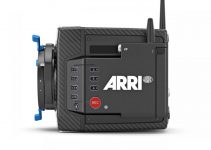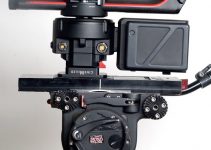The Sony A7III has become a wildly popular camera and rightly so. The combination of features, quality and, of course, price, make it hugely attractive.
One of its big selling points is the full frame sensor and the resulting shallow depth of field along with light gathering ability and everything else that goes into the fabled ‘Full-frame look’ – answers in the comments as to what that actually is, please.
So, let’s talk about the lenses that suit the Sony A7III, the Sony FE mount and cover the full frame sensor. On the release of the new A7 line of cameras, the choice of Sony FE glass was slim and it was fairly slow to fill out. A few years on, and now we have a fine selection of Sony FE lenses and plenty of other manufacturers who have seen the popularity of the Sony system and jumped on board with lenses of their own.
Chris Brockhurst has done some of the work for us and you can check out his YouTube video right here talking about his favorite Sony FE lenses.
It takes a bit of time and experimentation to come up with a list of lenses with their pros and cons, so thanks to Chris for putting in the effort, give him a like and subscribe! Here is his rundown:
Sony FE 16-35mm f4 (B&H, Amazon)
This is a versatile zoom lens from Sony, I used to own this one myself. For Chris, this is useful on a gimbal set for super wide, nicely stabilized shots. It is a nice focal length for general shooting, wide enough for selfie style vlogging and lovely as a walking lens for photography.
Chris calls this his ‘Everything Lens’ for everything from landscapes to portraits – sounds great, but let’s look at some of its shortcomings.
F4 – so a true f4 on a full frame camera can still produce nice bokeh and shallow depth of field, of course it can, just not as much as a f2.8. Chris focusses more on the low light ability of that f4 compared to the more expensive version of this lens that offers f2.8 as a max aperture suggesting that the high ISO capability of the A7III renders the f-stop for light gathering less important.
I agree that the Sony A7 cameras are excellent at high ISO’s, but choosing between an f 2.8 and f4 lens is a little more than that.
The f4 16-35mm is not cheap at $1,300 (the f2.8 and even more).
Sony FE 55mm f1.8 (B&H, Amazon)
Now this will produce a shallow depth of field and bokeh. 55mm is a lovely portrait focal length and at f1.8 you will be able to create real separation between your subject and their fore/background.
Shallow Depth of Field can be an overused look and it is worth keeping in mind that many lenses fall off in terms of sharpness the more wide open they are. So using this at f1.8 may not always be the best bet.
I’d like to point out that the video here does feel a lot like it’s suggesting the difference between a prime and zoom is flexibility and a prime can do anything a zoom can – if you are free to move with it. It’s not that simple as practicality is important but framing and positioning are equally so. Chris reckons that this prime lens is higher quality and that may well be the case, but Prime vs. Zoom for quality is also not that simple.
Sony FE 85mm F1.8 (B&H, Amazon)
Isolation, bokeh, shallow depth of field… it’s the same story but at a different focal length. I personally really like an 85mm myself as it lets me stand off the scene a little and give the subjects space without losing that tight shot feel.
F1.8 is very shallow on a full frame camera and shooting there all the time can become tiresome, remember just because it opens to f1.8 doesn’t mean that’s where it should always be… as we screw on more and more ND.
The 55mm and 85mm together will cost nearly a couple of thousand $’s, so maybe having both a luxury, especially when a 24-70mm would cover a similar range and lots more but this is all about preference and your shooting style.
Sony FE 70-200mm F4 (B&H, Amazon)
This is a popular lens. Chris calls it a sniper lens but put simply it is a valuable tool for getting tighter shots at a distance. It offers you some fantastic framing options with the length of zoom and the f4 aperture will still give you some nice shallow depth of field if you want it.
This lens is a bit of a beast especially on a mirrorless camera like the Sony A7III and it will make your camera bag a lot heavier to carry. I love having a decent zoom length available so I think it is worth the extra effort.
Conclusion
Other lenses are available. The lenses here are great but expensive and you might want to look at some other brands like Sigma or Tamron for cheaper options that perform extremely well. What works for Chris might not be ideal for you. His main area of focus seems to be wedding videography so if you shoot something different like macro, sport or architecture, then these probably won’t suit.
Just as there is no perfect camera there are no perfect lenses to choose.
[source: Chris Brockhurst]
Disclaimer: As an Amazon Associate partner and participant in B&H and Adorama Affiliate programmes, we earn a small comission from each purchase made through the affiliate links listed above at no additional cost to you.




